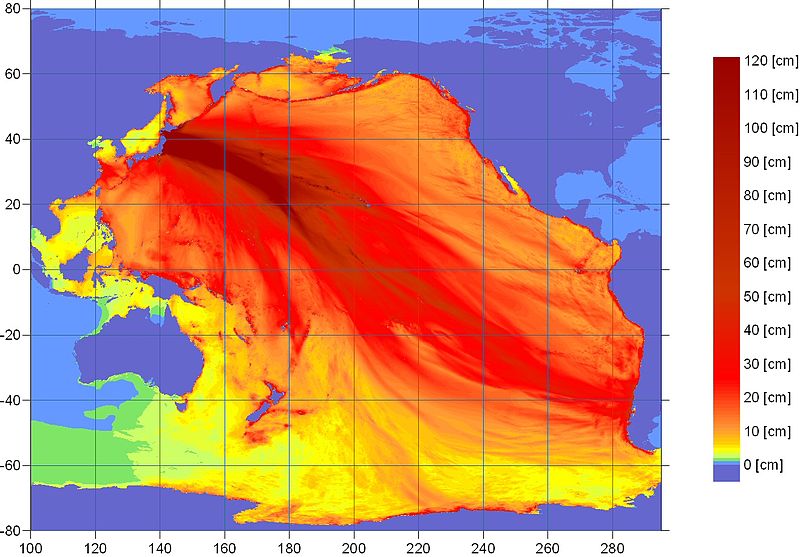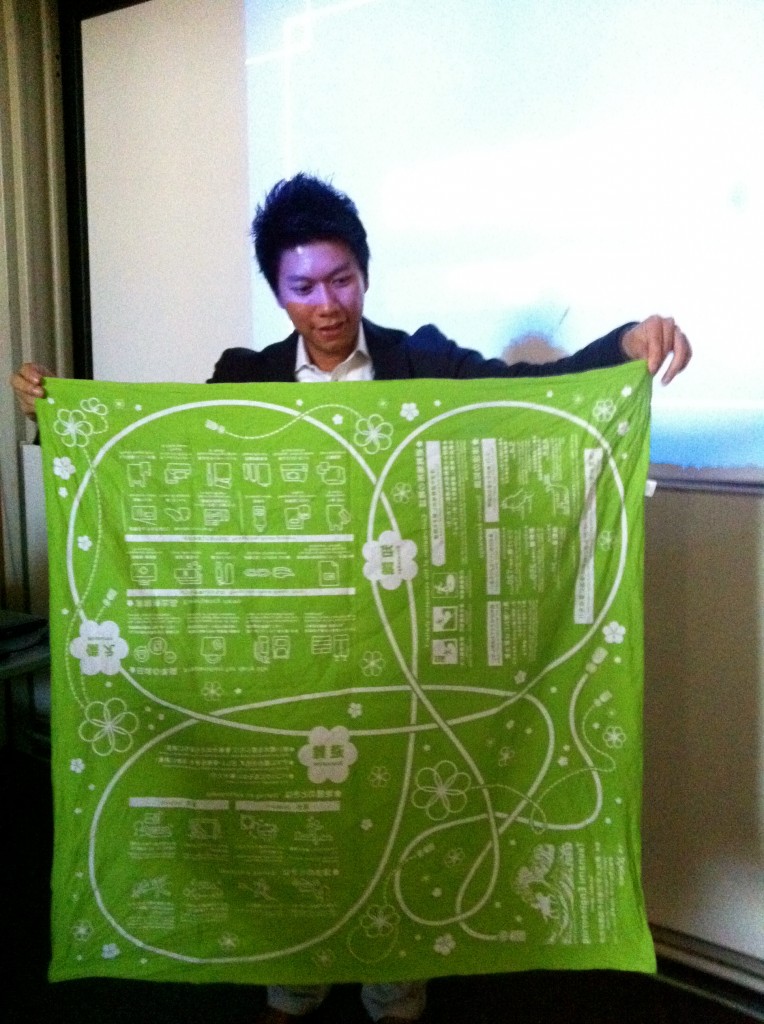Over a year and a half on from the Great Eastern Japan Tsunami, and there are still boats lying overturned at the side of roads. Recovering from such a major national catastrophe is a slow process. We hope to be able learn from this tragedy and use it to lower vulnerability to future disasters, both in Japan and around the world’s coastlines.
The magnitude 9.0 earthquake on the 11th March 2011 was one of the largest five earthquakes on record. The shaking triggered a tsunami forty metres high that travelled as far as ten kilometres inland across Japan. Over fifteen thousand people lost their lives as a result.

Energy map of the March 2011 Pacific Ocean tsunami, originating off the East coast of Japan.
Source [NOAA]
The Hellenic arc in the Mediterranean experiences large, tsunami-generating earthquakes with a repeat time of ~800 years. How many people remember the last one, in 365 AD? A European tsunami today would result in a comparatively high death toll because neither the public nor the authorities would be prepared. Experience can be life saving.
Along Japan’s East coast large earthquakes do not always precede a tsunami, so some waves arrive without warning. Dan McKenzie and James Jackson, two prominent seismologists at the University of Cambridge, suggested that this is because a tsunami can be triggered by the accretionary wedge (the sediment that piles up above the plate boundary) ‘popping back up’. In 1896 a silent wave resulted in 22,000 deaths. In 2011 the death rate was comparatively low, because the shaking acted as a natural early warning system.
However, there were factors in the 2011 event that worsened the death toll. The tsunami was higher than any in living history, and so many people relying on indicators of previous peak water height did not retreat far enough inland. People also put too much trust into engineered structures. In one case, a wall designed to block the wave was stationed directly in front of a hill. People could easily have climbed to higher ground but chose not to as they had faith in the engineered structure – and it failed.
One of the challenges in this region is designing buildings that are resistant to both earthquakes and tsunamis. The latest solution is to build composite structures where the lower floors are made from hard concrete, to protect against tsunamis, and the upper floors are built of lighter concrete or wood, to allow flexibility during earthquakes. The foundations must also go deeper and be more flexible in order to provide sufficient resistance.
The Japanese authorities are working to educate people about the best response, and what to expect, during a tsunami. They are distributing everyday items such as scarves with helpful information printed onto them. Such a scheme could easily be mimicked in developing countries as a cost effective way of informing people about natural hazards.
The vulnerability of a community to natural hazards can be reduced through collective experience and advanced preparation.

Anawat Suppasri, associate professor of tsunami risk evaluation at Tohoku University, demonstrating a tsunami information scarf
